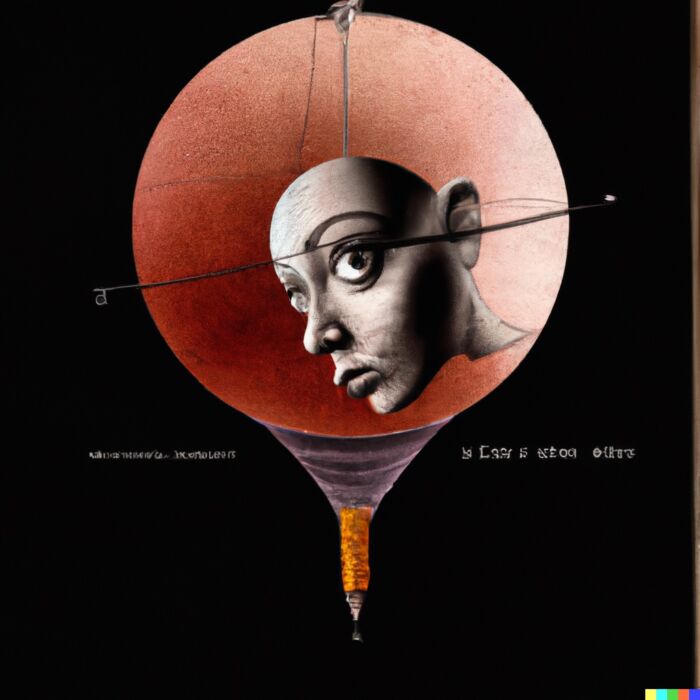When it comes to portfolio strategies, which have the capacity to drive returns and equally defend during turbulent economic times, few (if any) are more intriguing than Risk Parity.
The main quest of Picture Perfect Portfolios is to find optimal asset allocation solutions for investors seeking returns meets risk management.
Thus, I’m very keen to expand my knowledge related to Risk Parity investing and I couldn’t think of a better person to interact with than Justin from Risk Parity Chronicles to continue our “Investing Legends” series.
Justin is the first person I’ve connected with online that is aware of what I do as my “actual job” in terms of being a travel vlogger.
We’ve interacted in the comments section, for some of the videos I’ve posted on YouTube, from my channel Samuel and Audrey.
It is great to now connect over another shared mutual interest of optimized investing strategies.
Justin has lived an adventurous life working and traveling abroad.
Currently he’s living in Japan, with his family and rescue dog Lego, teaching at an International school.
Justin’s primary goal with his blog is to research, test and share insights about Risk Parity investing.
So it’s about time for me to stop yacking and hear what Justin has to say about the topic.

Hey guys! Here is the part where I mention I’m a travel vlogger! This “Investing Legends” interview is entirely for entertainment purposes only. There could be considerable errors in the data I gathered. This is not financial advice. Do your own due diligence and research. Consult with a financial advisor.

These asset allocation ideas and model portfolios presented herein are purely for entertainment purposes only. This is NOT investment advice. These models are hypothetical and are intended to provide general information about potential ways to organize a portfolio based on theoretical scenarios and assumptions. They do not take into account the investment objectives, financial situation/goals, risk tolerance and/or specific needs of any particular individual.
Risk Parity Investing Strategies

Risk Parity Investing Intro

Q1) Thanks for joining us today Justin! As a starting point, I thought we could rewind the clock back to when you first started getting interested in investing.
Who/what were some of your earliest influences as you explored the subject. How did you arrive at Risk Parity now being your main area of focus?
A1) I guess the first was around 2006 when my son was born. I had a kind of “male nesting instinct” and suddenly got serious about my student loans, saving for retirement, etc.
The first book to really make an impact with me was Burton Malkiel’s “Random Walk,” various things from and about Jack Bogle, and a book called “Asset Allocation” by Roger Gibson.
I stayed interested in personal finance and investing, and around 2017/8 or so started really getting into financial independence.
That was a lot through podcasts, so ChooseFI, Paula Pant, the Mad Fientist. Around then I was thinking about a career change, or maybe just a sidegig at the time, so I wound up taking the course to become a Certified Financial Planner.
I enjoyed the course and finished it, but also realized that I had topped out in terms of personal finance, like how much more about Roth IRAs versus Traditional IRAs did I need to read or listen to?
But investing was one of the things that no matter how much I read or learned, there was just more and more.
So, since about 2019, I’ve gone deeper into the rabbit hole with investing – I especially like the Rational Reminder podcast, Animal Spirits, Money For the Rest of Us.
Around then, I also stumbled across a podcast called Risk Parity Radio hosted by Frank Vasquez, and this was the podcast that tied a lot of things together for me.
I realized over time that I had been oriented towards Risk Parity investing all along, though I didn’t have the terminology to know that Risk Parity was what I was doing.
I kept investing in commodities throughout their long slide from about 2007 until just recently.
I couldn’t have articulated it at the time, but I was doing it based on the same principles that I later learned were the crux of Risk Parity.
So, I got really enthused by the concept, then did a lot of background reading, and realized there wasn’t much available for DIY investors, other than Risk Parity Radio.
I made the blog to share my journey and what I have been learning.
Risk Parity Definition
Q2) Risk Parity is one of the least understood investing strategies out there today.
If you were to ask most investors what risk-parity is, you’d probably get quite a few different answers.
You have everything from folks who think it is levered stocks/bonds to those who confuse it with a Ray Dalio All-Weather approach.
What in your opinion is a good working definition of Risk Parity investing and what doesn’t quite make the grade?
A2) Yeah, it’s tough because when people use the term, they often mean really different things.
I see Risk Parity as an investing approach with fuzzy edges, meaning that it’s not just one simple thing, and I usually refer to it as a set of principles instead of defining it exactly the asset allocation or trying to say RP must have at least X percent of this, no more than Y percent of that, etc.
That being said, it is most definitely NOT just a levered stocks/bonds mix.
Not that there’s anything wrong with that type of portfolio – to each their own – but it’s not Risk Parity.
I can see how the confusion happens, though, because RP portfolios often do contain levered stocks and bonds.
But not just those.
As for Dalio’s All-Weather, it is an RP approach, but other people do RP differently, so it doesn’t stand in for all RP portfolios.
To get back to the question, my working definition is that Risk Parity is an approach to asset allocation that emphasizes balancing risks between asset classes with the goal of creating diversified portfolios that can achieve steady returns in a variety of economic environments.
To break this down, it means RP portfolios decide on asset allocation based on their levels of risk, with more volatile assets occupying smaller allocations and less volatile ones with larger allocations.
It is also cognizant of combining asset classes that have different sources of risk and is on the lookout for non- and especially negatively correlated asset classes.
RP tries to assemble portfolios that are resilient in a variety of economic environments; the operative idea is that you try to prepare your portfolio for a repeat of the 1970s, the 1990s, or the 2010s or whatever, and you don’t try to predict which it will be.
What wouldn’t make the grade? Well, I’m not qualified to be the RP gatekeeper, but…
- if you only have two asset classes…
- if you think having international stocks gives your portfolio diversification and you have no idea how they are correlated to home country stocks…
- if you’re thinking about getting your portfolio prepared for the global trends you are “sure” to see over the next 2-3 years,…
Then you’re probably not doing Risk Parity.

Return Stacking = Risk Parity?
Q3) One of the more fascinating articles on your blog was your review of the Return Stacking investment strategy currently being developed by ReSolve and Newfound Research.
You came to the conclusion it was not exactly Risk Parity but adjacent to it.
What did you mean by that and are there other investing strategies that are in your opinion risk parity adjacent as well?

A3) I had heard of the fund and had heard the management from Resolve on a podcast, and I was like, “this sounds exactly like Risk Parity”, but they don’t use the exact terminology all that much.
So when I reviewed their whitepaper, I saw that they did indeed know of the intellectual origins of their approach and there really was a shared worldview.
I think they use the term “return stacking” because they are (rightfully) trying to carve out space in a competitive industry, and as per the last question, there are some people who bring a lot of assumptions to Risk Parity.
If you go with a new term like Return Stacking, then you get a chance to make your case from a fresh point of view, instead of having to spend all that time unpacking an old term.
Additionally, I think the Return Stacking term is really intuitive, and demonstrates what I call the second approach to RP.
The first approach is when you get those well-diversified, well-balanced portfolios, with no leverage.
Super safe, but higher allocations to Long-term Treasuries, or gold, or commodities when they are not doing so well is going to lower portfolio return.
So, the second approach is you use a modest amount of leverage to boost returns of that super safe portfolio, and now you have some space in your portfolio to be more aggressive.
So, Return Stacking is adjacent since it is a particular approach to what to do with a portfolio with the extra space after you have leveraged up a safe, risk-balanced portfolio.
As to others, I actually see a lot of other approaches which to me sound like RP, even if people don’t use the term.
A good example of that would be David J. Stein and his podcast Money For the Rest of Us.
I have been a dedicated listener for years, and he has hardly ever used the term “Risk Parity.”
But in probably one out of every four or five episodes he talks about the need to find multiple, non-correlated asset streams to create a resilient portfolio that will prepare for different economic conditions instead of trying to guess what it will be – that’s the essence of Risk Parity right there.

Risk Parity Portfolio
Q4) Let’s dig in deeper with Risk Parity portfolio asset allocation.
What currently do you feel is one of the easiest ways an investor can construct a risk parity portfolio solution?
Conversely, for those looking to optimize within each given sleeve of the portfolio (stocks, bonds and alternatives) what do you feel are some of the best ideas out there today for that?
A4) That’s the main topic of my blog, so usual disclaimers apply and everything on my blog is dedicated somehow to answering that question, but really simply:
- Make some room for alternatives, especially commodities and gold. Allocations need not be that high, 5% in each is fine to get started
- If you don’t have room, think about using embedded leverage ETFs to get the “bang” of equities with fewer actual bucks. If you use UPRO, NTSX, TMF, or something like that, you can get exposure to those asset classes with less capital, and use the extra capital to go for the diversification that you get with commodities, gold, or whatever. Of course, know what you are getting into with the risks associated with embedded leverage ETFs.
- Simple thing, but start paying a whole lot more attention to correlation, and examine how whatever assets you currently have are correlated with each other. Of course, keep in mind that correlations aren’t stable; be careful of looking at them once and thinking that they are locked in.
Another thing to keep in mind is that RP is not for everybody, honestly.
If you’ve got 30 years before you need to survive on your portfolio, then you’ll probably find more success with a 100% equities portfolio.
Gold and commodities are great for stabilizing your portfolio, but if we were to take a time machine to 2050, even I am pretty sure they will underperform equities by then.
I believe RP works best for people in the drawdown stage, or who otherwise are really prioritizing stability and resilience.
If CAGR is your focus above all else, RP probably isn’t the best approach for you.
At the same time, I do think most investors would benefit by being aware of RP, and maybe thinking about some of the principles.
Risk Parity Asset Allocation Downside
Q5) All investing strategies have an Achilles heel. Some are more obvious than others.
When is a Risk Parity strategy going to underperform or have investors questioning its effectiveness?
What is the perfect storm for a Risk Parity investment to leave investors feeling frustrated?
A5) One simple one is when the markets are in a big “risk off” moment and everyone just wants to be in cash. But that’s every investing strategy, really, right?
Specifically, the Biggest Achilles’ Heel for RP is when correlations that were thought to be stable suddenly aren’t.
RP counts a lot on large allocations to equities and Long-term Treasuries because they typically have had a strong negative correlation with each other.
Usually (in the past few decades), this has been a good strategy even in times of market turmoil and to give a recent example, RP was great during March 2020 – the stock market went down 20 or 30% or so, but Long-term Treasuries spiked up 25%, so in the depths of that sudden decline, I sold LT Treasuries when they were high to buy small cap value, which was low, in order to bring my RP portfolio in line.
Great move, in hindsight.
But, that relationship doesn’t always hold. If both decline at the same time, then RP portfolios are in trouble (so would the 60/40, to be fair).
Ironically, this is the exact situation that has been going on for about four months now, and so RP has gotten some flak, especially from the corners of the internet who think RP really is just levered stocks/bonds.
And it’s true – RP portfolios count on these two asset classes balancing each other out, and if they both decline, the portfolio is in trouble.
The saving grace for RP in this case is the larger positions in alternatives, which is why I was careful to say that a leveraged stocks/bonds strategy is not really RP.
These days, RP portfolios have been buoyed by their exposure to commodities, which are booming.
In my test portfolios on my blog, the RP portfolios have generally been outperforming traditional portfolios over the past few months since the higher commodities exposure has been a source to draw expenses from without having to touch the equity or fixed income portion.
This is to be expected with Risk Parity.
In a proper RP portfolio, there will likely be an asset class that is doing well at any point in time; the flip side is that there will also be an asset class in the gutter.

Risk Parity Portfolio Upside
Q6) Conversely, when is a Risk Parity portfolio going to shine and be at its best?
When will investors be thrilled to have allocated a slice, slab or entire portfolio towards a Risk Parity solution?
A6) Interesting question, because in a way, it’s the same answer.
When correlations do flip between two asset classes, it’s really nice to have a third, fourth, and a fifth asset class that are all unaffected.
So, in times of stress like these, RP portfolios come out smelling pretty good, because they have something to grab onto when turmoil strikes.
I test these with the portfolios on my site: RP portfolios have been declining this year, but not as much as the 60/40 or the 80/20 or whatever.

Risk Parity and Diversification
Q7) Risk Parity as an investment strategy thinks differently about diversification than a traditional 60/40 portfolio.
Firstly, it is not as aggressive in terms of its equity allocation and secondly, it creates space for an alternative sleeve.
How important is it to not be overexposed to equities while having an alternative sleeve in the portfolio from a risk-parity perspective?
A7) Crucially important, mostly because overexposure to equity risk is almost the de facto approach.
When someone has a 60/40 portfolio, they are close to balanced from a nominal point of view, but from a RP, they really have about a 93/7 portfolio in terms of risk – the overwhelming majority of their risk exposure is to equity risk.
In some cases, you even see people’s bond allocation is in corporate bonds (probably since they are reaching for the extra return), so if someone is 60% VTI and 40% VTC, they are basically 100% exposed to equity risk.
A panic in equity markets will send their stocks crashing at the same time creditors would be less willing to lend to companies, creating a double whammy for anyone holding that portfolio.
Those alts are key, even if they are small allocations. Gold is, on its own, a totally unsatisfactory asset, but in a portfolio, has some value in that it tends to respond to different panics and manias.
Not always, mind you.
Commodities have mostly sucked for about the last 14 years, but if you do have a pandemic, followed by supply chain issues, followed by an invasion of Ukraine, then they do respond.
That’s what we’re seeing now.
That being said, if your time horizon is quite long, then what I said in question 4 applies here.
If you’re just focused on long-term CAGR, then these blips will probably be forgotten, and you might not experience any real benefit from higher allocations to these alts.
Commodities are great now, but I could totally see a scenario where a year from now, their prices are back to pre-2020 levels.
In that case, the investor who just stayed in equities the whole time would be better off.
Risk Parity = Not Popular?
Q8) Although Risk Parity investing is gaining more acceptance as a viable strategy worth considering, it is nowhere close to industry standard.
In fact, it is considered an alternative investing strategy by the investing community at large.
What do you think is the main reason risk parity is not a more popular strategy today?
A8) I have wondered the same myself, and it’s kind of like the Groucho Marx quote about not wanting to be a member of a club that would have him as a member.
How smart could RP be if it’s up to a guy like me to be singing its praises?
But, I do have a couple of thoughts:
1) The 2010s were really a “picture perfect” decade for 60/40 investors.
Just put your money in big tech, and then even bonds kept rising in price as interest rates dropped continuously.
When 60/40 goes well, it’s hard to argue that you would have been better off with say 55/35/5 commodities/5 gold or something, since those two alt asset classes would have brought you down.
The people who say “Just go for a 60/40 – it’s been great since 2011” have a point; it’s just that RP people have doubts that the time period since 2011 will repeat itself.
2) Risk Parity as an approach is one that really keeps the lessons from the 1970s alive.
Ray Dalio came of investing age during that time, and another forerunner of RP, the Permanent Portfolio by Harry Browne, got articulated at that time, as well.
That was a high inflation, high-volatility decade with nominal stock returns that actually lost ground to rising prices.
For most of my investing lifespan, a return to the 1970s was off people’s radar, so some of the issues that prompted Dalio and Browne and others to adopt the approach have been forgotten, as well.
I have seen some more attention to RP as a framework lately – people may sense an era shift, as well.
3) I think another reason is just practical.
RP is well known in the industry, and maybe not as popular as it once was when Dalio’s Bridgewater was going through its peak years, but there was and is a lot of institutional money in RP strategies.
It has typically not been so popular among the retail crowd but I think that is changing as the investment vehicles evolve and get cheaper.
Embedded leverage ETFs are a big deal, and maybe soon we’ll get more retail versions of managed future strategies, more types of liquid alternatives, or other things that hitherto have not been accessible to DIY investors.

Learn More About Risk Parity Investing
Q9) If a friend came up to you and wanted to learn more about Risk Parity investing, where would you send them down the rabbit hole (aside from your fantastic blog) in terms of learning more about the strategy?
A9) Yeah, shameless plug, but I am trying to be a place where beginners can find an entryway into a RP approach.
But, beyond that, I think subscribing and listening to Risk Parity Radio would be a great way to learn more.
At the start of every episode, the host provides a road map of which lessons to start with, and you can also read my review of the podcast here.
Once you’ve done that, researching Ray Dalio and reading his whitepapers (and those of his firm, Bridgewater) are probably the next best place to go.
If you’re already well versed in portfolio construction and are looking for higher-level conversation more suited for professionals, then the podcasts/YouTube videos put out by ReSolve Asset management are great (you’ll find the podcast as “Resolve’s Gestalt University”) and touch on a lot of RP concepts.

Travel Questions
Q10) Thanks for taking the time to share your thoughts on Risk Parity today, Justin.
Let’s end things off with something fun related to travel.
Where is somewhere you’re itching to visit in the future and what activity would you most look forward to doing there?
Hmmm…, yeah this changes all the time, but some of the ones that always float to the top are Turkey, Croatia and Slovenia, and then Uruguay/Chile/Argentina (inspired by this great travel vlogging couple who made me fall in love with Bariloche!).
I’m a big fan of mountains and really into mountain towns in the summer.
Ideal day would be to pack a picnic, go for a couple hour hike with my wife, and then have a cold beer at the end.
I will retire in about seven years and my big idea now is to rent an RV in Europe and circumnavigate the Alps, maybe starting in Germany and going clockwise into Austria, Slovenia, Italy, France, and then back to Germany, with jaunts into Switzerland, of course.

Since you’re living in Japan, can you help give travelers a few off-the-beaten-path ideas for places to visit aside from Tokyo, Osaka and Kyoto?
If you like mountain towns like me, then Hakuba (in Nagano prefecture) would be my top recommendation.
It was the site of the ‘98 Winter Olympics, so great skiing in winter, and then the full slate of green season activities in the summer, too.
There is a great valley near there called Kamikochi that’s really one of the prettiest places in the world.
As for cities, I think Nagasaki is a place more people should go. It has a distinctive feel to it, one of the few cities in Japan where you’d know exactly where you were if you got dropped into it randomly.

Risk Parity Chronicles
Last but not least, how can people connect with you online, Justin?
From your Blog to your Twitter account to your YouTube channel how can people find you and learn more about Risk Parity as you continue your quest about the subject?
So, the blog is: https://www.riskparitychronicles.com/.
I try to post twice a week, with portfolio reviews at the start of every month as well. I’m also on Twitter at “@rp_chronicles” as well.
I’m on YouTube at Risk Parity Chronicles, as well, but I don’t publish anything on the channel that isn’t already on the blog, so probably easier to just follow the blog.
And thanks for the chance to share more about Risk Parity!
Important Information
Comprehensive Investment Disclaimer:
All content provided on this website (including but not limited to portfolio ideas, fund analyses, investment strategies, commentary on market conditions, and discussions regarding leverage) is strictly for educational, informational, and illustrative purposes only. The information does not constitute financial, investment, tax, accounting, or legal advice. Opinions, strategies, and ideas presented herein represent personal perspectives, are based on independent research and publicly available information, and do not necessarily reflect the views or official positions of any third-party organizations, institutions, or affiliates.
Investing in financial markets inherently carries substantial risks, including but not limited to market volatility, economic uncertainties, geopolitical developments, and liquidity risks. You must be fully aware that there is always the potential for partial or total loss of your principal investment. Additionally, the use of leverage or leveraged financial products significantly increases risk exposure by amplifying both potential gains and potential losses, and thus is not appropriate or advisable for all investors. Using leverage may result in losing more than your initial invested capital, incurring margin calls, experiencing substantial interest costs, or suffering severe financial distress.
Past performance indicators, including historical data, backtesting results, and hypothetical scenarios, should never be viewed as guarantees or reliable predictions of future performance. Any examples provided are purely hypothetical and intended only for illustration purposes. Performance benchmarks, such as market indexes mentioned on this site, are theoretical and are not directly investable. While diligent efforts are made to provide accurate and current information, “Picture Perfect Portfolios” does not warrant, represent, or guarantee the accuracy, completeness, or timeliness of any information provided. Errors, inaccuracies, or outdated information may exist.
Users of this website are strongly encouraged to independently verify all information, conduct comprehensive research and due diligence, and engage with qualified financial, investment, tax, or legal professionals before making any investment or financial decisions. The responsibility for making informed investment decisions rests entirely with the individual. “Picture Perfect Portfolios” explicitly disclaims all liability for any direct, indirect, incidental, special, consequential, or other losses or damages incurred, financial or otherwise, arising out of reliance upon, or use of, any content or information presented on this website.
By accessing, reading, and utilizing the content on this website, you expressly acknowledge, understand, accept, and agree to abide by these terms and conditions. Please consult the full and detailed disclaimer available elsewhere on this website for further clarification and additional important disclosures. Read the complete disclaimer here.








